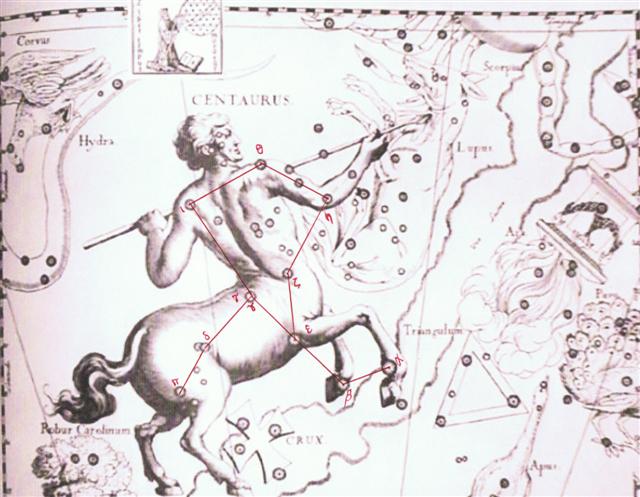By beginning at the bottom of the tablet once again, at left in line Cb1, we maybe should try to read the text 'nakshatra fashion'. There will then be a maro hanging down at 14h, precisely where in rongorongo times Menkent (θ Centauri) would have risen with the Sun, in October 20 (and half a year later than April 20). Summer would lie ahead on Easter Island:
The design of Cb1-4 includes a string in front, curved in a way which could be interpreted as a sign meaning 'start at bottom again'. The left part (i.e. in the past) shows henua decreasing. But with the maro string in front it could mean 'decreasing Earth is ending here'. This decreasing henua could have begun 9 days earlier, in October 11 (where we can count 8 * 11 = 88 as if alluding to March 29). 348 (side b) + 6 (the distance from *Ca14-24 to the end of side a) = 354 (= 12 * 29½). Perhaps henua in *Ca14-24 (and at left in Cb1-4) also alludes to the Mamari tablet itself. Side b is shorter than side a.
I like this interpretation, for instance because 14 * 24 = 336 = 12 * 28. Primarily though, because 213 (14h) - 10 (the number of days from *Ca14-24 up to and including Cb1-4) = 193. 193 points at Castor (the divine twin who once was mortal). If someone dies here, it could be Castor. Or else 193 could be a Sign of the death of someone else. In rongorongo times Castor rose heliacally in July 12:
In late October on Easter Island (and close to the Full Moon) the Centaur could be seen to kill the Wolf as a sign of summer ahead. And below was the Southern Triangle, possibly with a meaning similar to the Mesopotamian mulApin:
Perhaps glyph 384 at left illustrates 192 + 192, where each such 'halfcycle' represents (pars pro toto) 384 nights. 24 * 32 = 2 * 384 = 768 (12 less than the synodic cycle of Mars).
At right in the glyph is an element slightly lower positioned and opposite in kind, which could illustrate how here - or after 8 further nights, beyond the end of side a - another perspective takes over. | |||||||||||||||||||||||||||||||||||||||||||||||||||||||||||||||||||||||||||||||||||||||||||||||||||||||||||||||||||||||||||||||||||||||||||||






